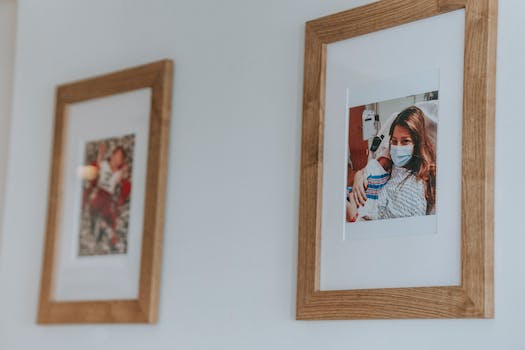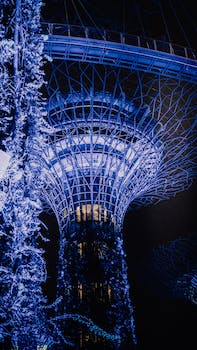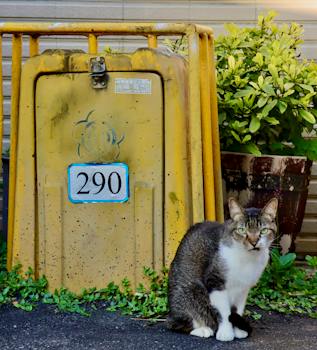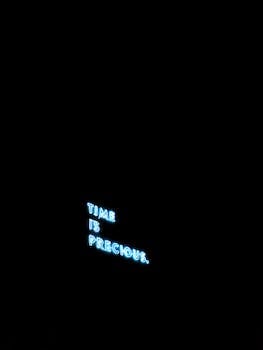

-
Table of Contents
Unveiling the Veiled: Unraveling the Mystery of Hidden Mothers
Introduction
Hidden Mothers: Delving into a Fascinating Historical Tradition
The practice of hiding mothers in photographs, known as "hidden mothers," was a peculiar yet intriguing tradition that emerged during the Victorian era. This enigmatic phenomenon involved concealing the presence of mothers while capturing portraits of their children. Although the reasons behind this tradition remain somewhat elusive, exploring the history and significance of hidden mothers provides a fascinating glimpse into the lives and societal norms of the past. In this article, we will delve into the enigma of hidden mothers, shedding light on this captivating historical tradition.
Unveiling the Mysterious Origins of the Hidden Mother Phenomenon
Exploring the Enigma of Hidden Mothers: Delving into a Fascinating Historical Tradition
Unveiling the Mysterious Origins of the Hidden Mother Phenomenon
In the realm of historical photography, there exists a peculiar and enigmatic tradition known as the hidden mother phenomenon. This intriguing practice, which emerged in the mid-19th century, involves concealing the mother's presence in a photograph while capturing the image of her child or children. The reasons behind this tradition remain shrouded in mystery, but several theories have emerged to shed light on its origins.
One theory suggests that the hidden mother phenomenon arose due to the technical limitations of early photography. In the early days of the medium, exposure times were significantly longer than they are today. Young children, notorious for their inability to sit still, would often blur or move during the exposure, resulting in an unsatisfactory image. To counteract this, mothers would hold their children in place, often using various props or drapery to disguise their presence. By concealing themselves, mothers could ensure a clear and focused image of their child.
Another theory proposes that the hidden mother phenomenon was driven by societal norms and expectations. During the Victorian era, mothers were expected to be self-effacing and modest, prioritizing their children's image over their own. By hiding themselves in photographs, mothers could adhere to these societal expectations while still capturing a cherished image of their child. This theory aligns with the prevailing cultural values of the time, which emphasized the importance of motherhood and the role of women as self-sacrificing caregivers.
Furthermore, the hidden mother phenomenon may have been influenced by the prevailing beliefs surrounding spiritualism during the 19th century. Spiritualism, a popular movement that gained traction during this period, focused on communication with the spirit world. It was believed that spirits could be captured in photographs, and some individuals may have hidden themselves in photographs to create an ethereal or ghostly effect. This theory suggests that the hidden mother phenomenon was a way to imbue the photograph with a sense of mysticism and spiritual significance.
While these theories provide some insight into the origins of the hidden mother phenomenon, the true reasons behind this practice may never be fully known. The tradition itself, however, continued well into the 20th century, even as photography technology advanced. As exposure times shortened and the need for concealment diminished, the hidden mother phenomenon evolved. Instead of hiding behind props or drapery, mothers began to blend into the background, often wearing dark clothing or positioning themselves in shadowy corners. This evolution suggests that the tradition held a deeper significance beyond mere technical limitations.
In recent years, the hidden mother phenomenon has garnered renewed interest and fascination. Art historians and photography enthusiasts have delved into archives, unearthing countless examples of these mysterious photographs. Exhibitions and publications dedicated to this tradition have emerged, shedding light on a previously overlooked aspect of photographic history. The hidden mother phenomenon serves as a reminder of the complexities and nuances of historical practices, offering a glimpse into the lives and experiences of women in the past.
In conclusion, the hidden mother phenomenon remains an enigma, with its origins rooted in a combination of technical limitations, societal expectations, and spiritual beliefs. While the true motivations behind this tradition may never be fully understood, its enduring presence in historical photography speaks to its significance. By exploring and unraveling the hidden mother phenomenon, we gain a deeper understanding of the complexities of the past and the role of women in shaping history.
The Symbolism and Significance of Hidden Mothers in Historical Photography

Exploring the Enigma of Hidden Mothers: Delving into a Fascinating Historical Tradition
Photography has always been a powerful medium for capturing moments in time, preserving memories, and documenting history. Throughout the years, various trends and techniques have emerged, each reflecting the values and customs of the era. One intriguing tradition that has captivated historians and photography enthusiasts alike is the concept of hidden mothers in historical photographs.
In the early days of photography, capturing a clear image was a challenging task. Long exposure times required subjects to remain still for extended periods, making it nearly impossible for infants and young children to pose without assistance. This led to the emergence of the hidden mother phenomenon, where mothers would conceal themselves in the background, often under a piece of fabric or behind furniture, while holding their children.
The symbolism behind hidden mothers in these photographs is multifaceted. On one hand, it represents the sacrifices and selflessness of motherhood. These women willingly hid themselves, often uncomfortable and unseen, to ensure that their children would be captured for posterity. It speaks to the unconditional love and devotion that mothers have for their offspring, willing to put their own needs and desires aside for the sake of their children.
Furthermore, hidden mothers also symbolize the societal expectations placed upon women during that time period. In the Victorian era, for example, women were expected to be modest and reserved, often taking a backseat to their husbands and children. By hiding themselves in photographs, these mothers were adhering to the societal norms of the time, reinforcing the idea that their role was primarily in the background, supporting and nurturing their families.
The significance of hidden mothers extends beyond symbolism and into the realm of historical documentation. These photographs provide a unique glimpse into the lives of women during a particular era. They offer a rare perspective on the experiences and challenges faced by mothers in the past, shedding light on the often overlooked aspects of their lives. Through these images, we can gain a deeper understanding of the roles and expectations placed upon women, as well as the ways in which they navigated and negotiated their place in society.
Hidden mothers also serve as a reminder of the limitations of early photography technology. In an age where we can effortlessly capture countless images with a simple click of a button, it is easy to take for granted the advancements that have been made. These photographs serve as a testament to the ingenuity and resourcefulness of photographers and their subjects, who found creative ways to overcome the limitations of their time.
In conclusion, hidden mothers in historical photography represent a fascinating and enigmatic tradition. They symbolize the sacrifices and societal expectations placed upon women, while also providing valuable insights into the lives of mothers in the past. These photographs serve as a reminder of the challenges faced by early photographers and the resourcefulness required to capture a clear image. As we delve into the world of hidden mothers, we gain a deeper appreciation for the artistry, symbolism, and historical significance of these captivating photographs.
Unraveling the Untold Stories: Uncovering the Lives of Hidden Mothers in History
Exploring the Enigma of Hidden Mothers: Delving into a Fascinating Historical Tradition
Unraveling the Untold Stories: Uncovering the Lives of Hidden Mothers in History
Throughout history, women have played a vital role in shaping society, yet their contributions have often been overlooked or forgotten. One intriguing aspect of women's history is the tradition of hidden mothers. This enigmatic practice, prevalent in the 19th and early 20th centuries, involved concealing the mother's presence in photographs, leaving only the child visible. By delving into this fascinating historical tradition, we can gain insight into the lives of these hidden mothers and the societal expectations they faced.
The phenomenon of hidden mothers emerged during the early days of photography when long exposure times made it difficult for young children to sit still for a portrait. To capture a clear image, mothers would often hold their infants or young children while remaining hidden under a shroud or behind a piece of furniture. This technique allowed the child to be the focus of the photograph, while the mother's presence remained concealed.
The reasons behind this practice were multifaceted. Firstly, it was a practical solution to the technical limitations of early photography. However, hidden mothers also symbolized the sacrifices and selflessness of motherhood. By removing themselves from the visual narrative, these women emphasized their dedication to their children, prioritizing their offspring's image over their own.
Hidden mothers were not limited to any particular social class or region. This tradition was prevalent across various cultures and socioeconomic backgrounds. From working-class families to the aristocracy, women from all walks of life participated in this practice. It was a reflection of the societal expectations placed upon women during that era, where motherhood was considered a woman's primary role and her identity was often subsumed by her children.
The hidden mother phenomenon also sheds light on the limited agency women had in society. By erasing themselves from the visual record, these women were conforming to the prevailing norms and expectations of the time. Their identities were subsumed by their roles as wives and mothers, and their individuality was often overshadowed by their familial responsibilities.
However, hidden mothers were not passive victims of societal expectations. They found creative ways to assert their presence within the constraints of the tradition. Some women would subtly reveal their hands or feet in the photograph, leaving a trace of their existence. Others would use props or accessories to leave a personal mark, such as holding a book or a piece of embroidery. These small acts of defiance allowed these women to reclaim a sense of identity within the confines of the hidden mother tradition.
As time progressed and societal norms shifted, the tradition of hidden mothers gradually faded away. The advent of faster exposure times and more advanced photographic techniques made it easier to capture children's portraits without the need for concealment. Additionally, as women's roles in society expanded beyond motherhood, the emphasis on hiding their presence in photographs became less relevant.
In conclusion, the tradition of hidden mothers offers a fascinating glimpse into the lives of women in the past. It highlights the societal expectations placed upon women and the sacrifices they made for their children. By exploring this enigmatic practice, we can uncover the untold stories of these hidden mothers and gain a deeper understanding of the complexities of women's history.
Q&A
1. What is the historical tradition of hidden mothers?
The historical tradition of hidden mothers involves mothers being concealed or partially hidden in photographs with their children during the Victorian era.
2. Why were mothers hidden in these photographs?
Mothers were hidden in these photographs to ensure that the focus remained on the child, as they were the primary subject of the photograph.
3. What is the significance of exploring the enigma of hidden mothers?
Exploring the enigma of hidden mothers provides insight into the societal norms and expectations surrounding motherhood during the Victorian era, as well as the evolving role of women in photography.
Conclusion
In conclusion, exploring the enigma of hidden mothers provides a fascinating glimpse into a historical tradition that was prevalent in early photography. This practice, where mothers concealed themselves while holding their children for portrait photographs, raises questions about societal norms, gender roles, and the representation of motherhood. By delving into this intriguing phenomenon, researchers and historians can gain valuable insights into the cultural and social dynamics of the past, shedding light on the complexities of human experiences and the evolution of photography as an art form.












